Table of Contents
The History of Polestar: A Journey Through Time
From its inception as a high-flying racing team to its rebirth as a cutting-edge electric vehicle (EV) innovator, the epic of Polestar is nothing short of exhilarating. Woven into the fabric of automotive history, Polestar’s journey echoes a relentless quest for performance and perfection. With vivid chapters that recount the transformation from a celebrated performance partner of Volvo Polestar to a purveyor of electrified prowess in its own right, the Polestar evolution paints a portrait of ambition and forward-thinking.
Precise engineering, an unwavering commitment to sustainability, and a flair for design have propelled the Evolution of Polestar brand into the limelight of the EV market. As we shift gears into a new era of automobile enthusiasm, a look back at Polestar’s storied past reveals the foundation that sets the stage for a thrilling and sustainable future. Join us as we trace the bolts of lightning that mark the high-octane landmark events in Polestar history.
Key Takeaways
- Discover Polestar’s transformative evolution from a racing team to a standalone EV brand under the Volvo Car Group.
- Uncover the milestones that chart Polestar’s course through innovation and sustainability in the auto industry.
- Revisit the partnership with Volvo and how it shaped Polestar’s performance DNA.
- Gain insights into the design, technology, and pure electric ambition that underpin Polestar’s vision.
- Explore the brand’s strategic pivot towards an electric future, reflecting on significant models like Polestar 1 and Polestar 2.
- Understand the dynamic interplay between Polestar’s racing heritage and its avant-garde approach to EV manufacturing.
Origins of the Polestar Brand
The inception of Polestar is a testament to relentless innovation and a passion for high-performance vehicles. It’s a narrative that doesn’t just begin with the birth of a new car marque but also tells a story of a flourishing partnership and a shared ethos for excellence and sustainability in automotive engineering.
The Early Days and Volvo Ties
The Polestar foundation was laid by a deep-seated kinship with Volvo Cars, anchored firmly in the pursuit of creating unrivaled vehicles with enhanced driving dynamics. This collaboration we now know as the Polestar Volvo partnership started with Polestar acting as a performance car tuner, fine-tuning Volvos to unlock their vehicular prowess.
Racing Heritage and Performance DNA
The Polestar racing origins are crucial chapters in the brand’s rich narrative. Melding a competitive spirit with automotive science, Polestar embarked on a journey that saw them bowing wins and setting records on the racing tracks. These triumphs weren’t just trophies to line shelves; they were invaluable experiences that embedded a unique Polestar performance history into each vehicle’s DNA, influencing future road-going models with the essence of a racer’s heart.
Polestar Becomes Electric
The Polestar electric evolution marks a pivotal chapter in the automotive narrative, signifying more than a product line expansion—it heralds a fundamental shift in the brand’s identity. As we delve into the Polestar EV transformation, it’s impossible not to admire how bold decisions have propelled the marque into the forefront of the electric revolution. Owning a Polestar electric car is not just a statement of luxury, but also a commitment to a more sustainable mode of transportation. Let’s explore the significant impacts that the transition towards a suite of ultra-modern Polestar electric vehicles has on the brand and the burgeoning EV industry.
With the launch of its first all-electric model, Polestar etched a new ethos into its brand core—sustainability paired with innovation. Every ensuing model is a testament to this commitment, marrying Scandinavian design with emission-free power. Below is a table reflecting the comparison between Polestar’s earlier hybrid models and their latest fully electric offerings:
| Model | Drivetrain | Battery Capacity | Electric Range |
|---|---|---|---|
| Polestar 1 | Plug-in Hybrid | 34 kWh | 60 miles (Electric only) |
| Polestar 2 | Fully Electric | 78 kWh | 291 miles (WLTP) |
The table clearly delineates the brand’s technological progress; from the plug-in hybrid grand tourer to a dynamic all-electric fastback. The significance of these developments resonates through the industry, setting new benchmarks for performance and environmental consciousness. Comprehending the depth of Polestar’s electric vehicle portfolio underlines the profound nature of its industrial metamorphosis and charts the trajectory for future innovations under the Polestar marque.
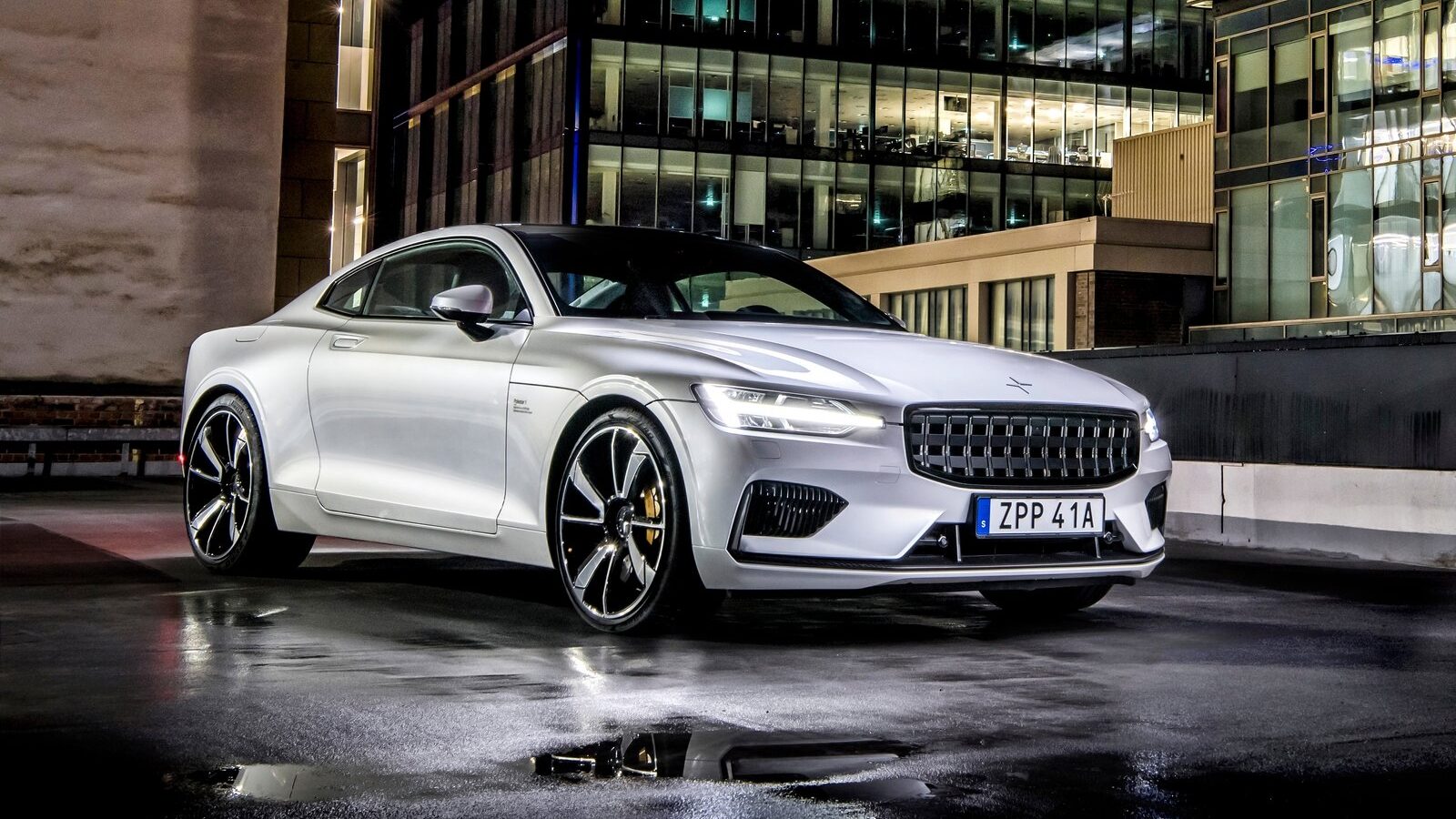
Polestar 1: The Beginning of a New Era
Breaking onto the automotive scene with significant momentum, the Polestar 1 heralded a transformative epoch in the realm of luxury hybrids. With its unveiling came a fresh perspective on high-performance, sustainably-minded vehicles, which spoke to the artistry and foresight of the brand’s visionary team.
Launch and Impact on the Auto Industry
The Polestar 1 launch was not simply an introduction of another vehicle; it was a bold statement in the automotive landscape. This meticulously engineered coupe redefined the blend of electric efficiency with performance flair, thereby altering the course of the luxury hybrid sector. The Polestar 1 impact resonated through the industry, propelling the conversation around electric vehicles to new heights and reaffirming the potential of hybrid technology without compromises.
Limited Edition and Collector’s Appeal
Exclusivity fuels desire, and the Polestar 1 quickly ascended to the status of a modern collectible. Crafted in limited quantities, the model garnered appeal among automobile enthusiasts and connoisseurs alike—each aspiring to possess not just a car, but a slice of innovation destined for historical significance.
Technical Specifications and Performance
Diving into the Polestar 1 specs reveals a marvel of engineering that balances eco-conscious aspirations with an exhilarating performance. The synergy within its plug-in hybrid powertrain provides a compelling drive that sets a benchmark for future vehicles. Emphasizing the Polestar 1 performance, it is not merely the horsepower or the torque that captivates, but rather the harmonious orchestration of power that makes every ride exceptional.
| Specification | Detail |
|---|---|
| Engine | 2.0L Turbo & Supercharged Plug-in Hybrid |
| Power Output | 619 hp Combined |
| Torque | 738 lb-ft Combined |
| All-Electric Range | Approximately 70 miles (EPA) |
| Price | Starting at approximately $155,000 |
Embodying the ethos of effortless power alongside renewable energy ideals, the Polestar 1 price sits as a reflection of its status as a paradigm-shifting masterpiece. With the Polestar 1, a new chapter in automotive excellence began—one defined by a seamless fusion of strength, sophistication, and sustainability.
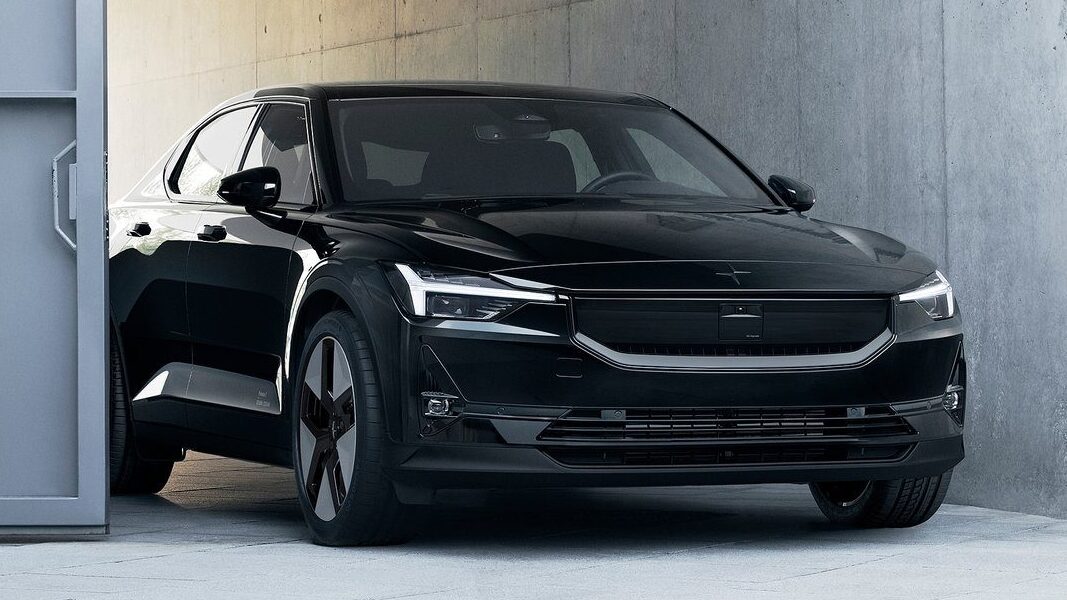
Expanding the Lineup: Polestar 2 and Its Success
The Polestar 2 has not only expanded the marque’s lineup but also solidified its standing in the EV sphere with impressive sales figures and critical acclamation. A beacon of the brand’s innovative spirit, the 2022 Polestar 2 set high benchmarks in the industry, delivering top-tier performance and a suite of smart features. This new wave in electric propulsion has been pivotal in establishing Polestar’s position against established competitors, with an excellent price-to-features ratio.
As the 2022 iteration received glowing commendations for its calculated blend of luxury, efficiency, and performance, expectations are surging for the 2023 Polestar 2. Anticipation is high for advancements in both hardware and software that could further refine the driving experience and extend its electric range. Current and prospective owners alike eagerly await the latest specs and upgrades that could redefine the EV standards set by its predecessor.
| Feature | 2022 Polestar 2 | 2023 Polestar 2 (Expected) |
|---|---|---|
| Powertrain | Dual Motor – All Electric | Dual Motor – All Electric (Enhancements likely) |
| Range | 233 miles (EPA est.) | 250+ miles (Estimated) |
| Interior Tech | 11-inch Touchscreen with Google Integration | Updated Infotainment (Expected) |
| Starting Price | $45,900 | TBA |
| Safety Features | Pilot Assist, Collision Avoidance | Expected enhancements in driver assistance systems |
Critics and consumers have shared Polestar 2 reviews that often highlight the vehicle’s serene cabin, engaging driving dynamics, and the intuitive nature of its in-car technology. Such positive sentiment contributes to the Polestar 2’s success and is a testament to the brand’s ability to listen to and incorporate driver feedback. While maintaining affordability, evidenced by the Polestar 2 price, it manages to embody the essence of premium electric mobility.
Undoubtedly, the Polestar 2 is more than just a number in the company’s portfolio. It’s an emblem of Polestar’s dedication to innovation, sustainability, and customer satisfaction—a promising preview of what’s to come from the automaker’s future ventures.
Polestar’s Pioneering Electric Vehicle Technology
At the forefront of the electric vehicle (EV) landscape, Polestar continues to push the boundaries of what’s possible with their relentless pursuit of innovation. With their state-of-the-art Polestar technology and sustainable solutions, they are carving a path towards a greener future.
Innovations in Battery and Powertrain
The heart of any EV is its battery and powertrain system, and Polestar battery innovation stands out in the industry. By merging power with efficiency, Polestar has enhanced the driving experience and extended the range of their vehicles. The sophisticated Polestar powertrain design ensures dynamic performance while maintaining efficiency, setting a new benchmark in EV technology.
| Feature | Details | Benefits |
|---|---|---|
| Energy Density | High-capacity battery cells | Longer range with fewer charge stops |
| Charging Speed | Rapid charge capabilities | Quick and convenient power-ups |
| Regenerative Braking | Recapture kinetic energy | Increased battery efficiency |
| Cooling System | Advanced thermal management | Optimal battery performance and lifespan |
Sustainability Commitments
It’s not just about advanced Polestar EV technology—sustainability is a cornerstone of their philosophy. Polestar’s commitment to the environment is exemplified in their choices of materials and their comprehensive approach to reducing emissions throughout the manufacturing process. They aim not just to offset their carbon footprint but to eliminate it wherever possible, leading the charge in Polestar sustainability within the automotive sector.
- Use of recycled materials for interior components
- Development of a fully electric line-up to reduce tailpipe emissions
- Investment in renewable energy sources at production facilities
- Long-term goal of creating a climate-neutral car by 2030
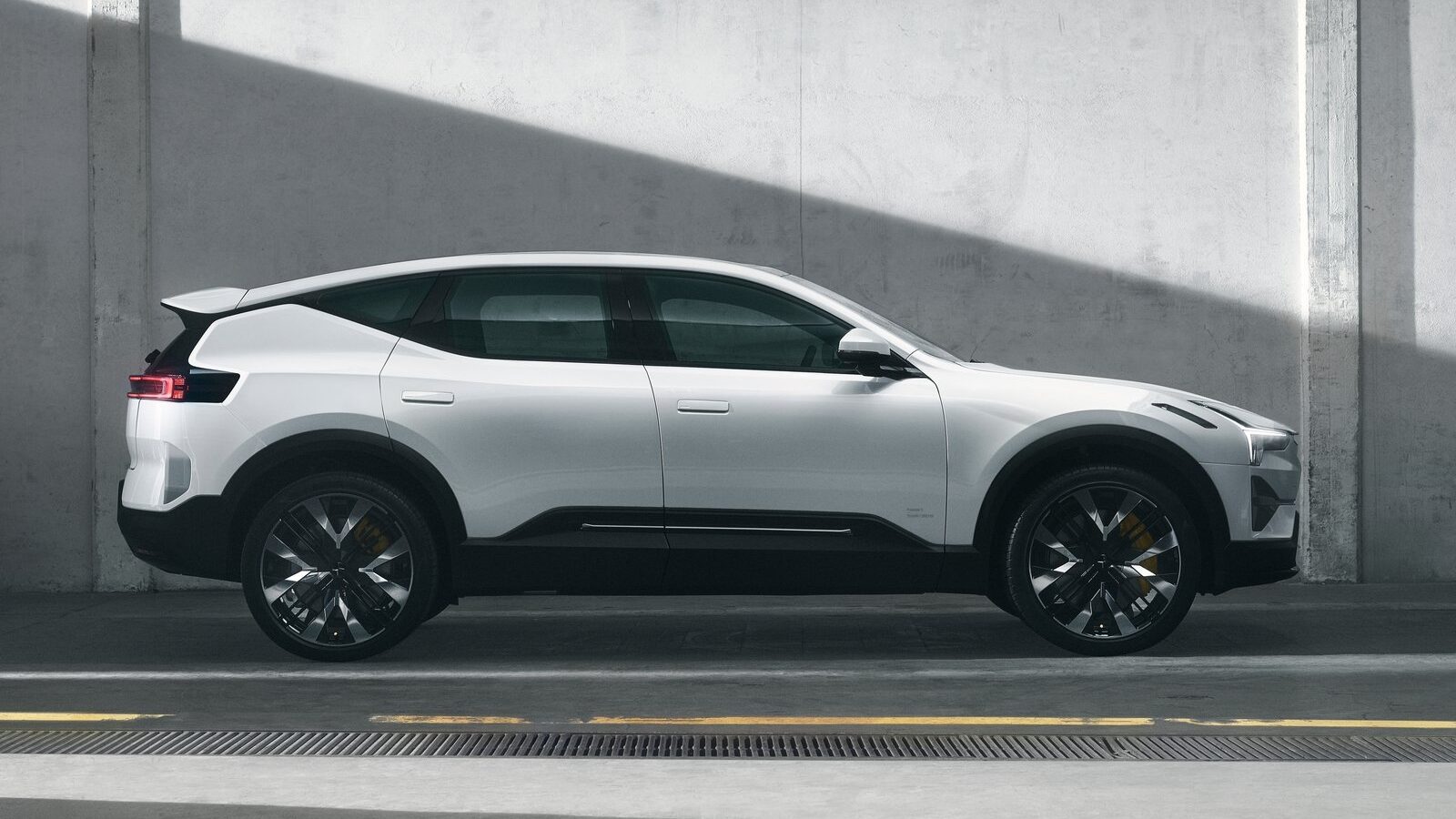
The Launch of Polestar 3 and Its Luxury SUV Market Entry
The arrival of the Polestar 3 signals a monumental stride into the expanding realm of luxury electric SUVs. This highly anticipated vehicle combines the allure of Scandinavian design with cutting-edge technology, poised to elevate the brand’s prestige and disrupt the competitive landscape.
Anticipated Features and Design Elements
Expected to be a beacon of the Polestar 3 features, its design epitomizes the very ethos of modern luxury — an amalgamation of functionality and aesthetics. Prospective buyers and industry aficionados alike eagerly anticipate its sleek aerodynamic profile, state-of-the-art infotainment system, and sustainable yet luxurious interior materials, embodying the Polestar 3 design philosophy.
Market Reception and Expected Performance
The initial buzz surrounding the Polestar 3 launch suggests that the market reception may be highly favorable. Potential customers seem ready to embrace the brand’s take on the electric SUV with textured feedback highlighting excitement for its seamless blend of performance and luxury. With the Polestar 3 price positioning it among prestigious peers, enthusiasts are awaiting to see if its performance fulfills the promise of an uncompromising, dynamic driving experience intrinsic to the Polestar SUV identity.
Polestar’s Design Philosophy: Aesthetic Meets Function
In the realm of electric vehicles, Polestar design remains a beacon of innovation that marries Polestar aesthetics with Polestar functional design. At the heart of this Polestar philosophy, we find a commitment to minimalism that persists not just as a visual signature but as a doctrine influencing the very performance of these vehicles.
The sleek lines and uncluttered surfaces of a Polestar are emblematic of the Scandinavian heritage that belies an obsession with detail. This unique vocabulary of Polestar’s visual presentation is evident across its lineup, reflecting a methodical approach where every curve and angle has been optimized for aerodynamic efficiency and driver experience.
- Minimalist Approach: Ensuring every design element serves multiple purposes.
- Attention to Detail: From stitching to switchgear, every aspect of the design is thoughtfully considered.
- Strength in Simplicity: The use of high-quality materials projected in a straightforward yet sophisticated way.
- Harmony between Elements: The seamless integration of technological features into the overall design aesthetic.
| Design Principle | Description | Impact on Vehicle Performance |
|---|---|---|
| Aerodynamic Silhouette | Design optimized for wind resistance | Enhances efficiency and range |
| LED Lighting | Energy-efficient lights with a signature Thor’s Hammer design | Improves visibility and energy conservation |
| Intuitive Interfaces | User-centric design for ease of use | Reduces driver distraction and optimizes user interaction |
| Sustainable Materials | Use of recycled and eco-friendly fabrics | Aligns with brand sustainability goals and enhances interior comfort |
True to the Polestar philosophy, the fusion of form and function is not an accidental byproduct but a deliberate intersection of art and science. Polestar’s sense of purpose in its design execution ensures that drivers enjoy an EV that is as aesthetically appealing as it is exhilarating to drive. It’s a testament to the brand’s DNA: creating vehicles that stand out not just for their looks but also for their conscious embrace of the future of driving.
Behind the Wheel: A Polestar Review Summary
Experiencing Polestar from the driver’s seat transcends regular driving; it’s about engaging with a car that’s meticulously designed with precision handling and advanced technology. This section collates insights from various Polestar owners and experts who share their opinions on what it’s like to command these electric vehicles.
Driving Experience and Handling
The Polestar vehicles have been consistently praised for their exhilarating driving experience and deft handling. The balance between sportiness and comfort means these cars glide over road imperfections yet remain unfazed during spirited driving. What sets Polestar apart is the harmony between an electric powertrain’s instant torque and the engineered suspension setup, which contributes to an agile ride, inspiring a great deal of confidence behind the wheel.
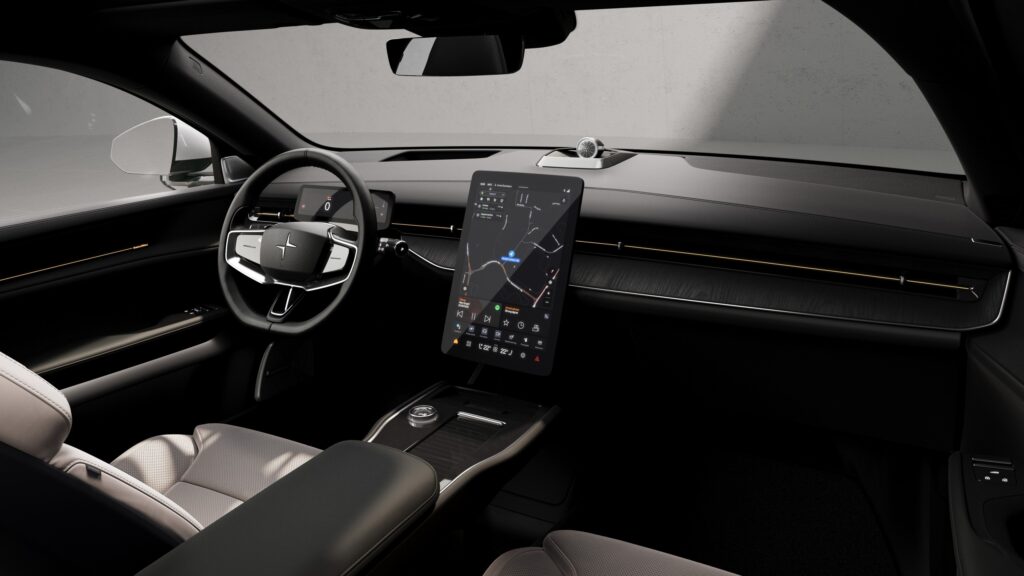
Interior Comfort and Technology Integration
The Polestar interior is a realm of luxury and innovation, marrying minimalist aesthetics with functional design. Owners appreciate the ergonomic seats that combine support and comfort, ideal for both long journeys and everyday commutes. The technology integration, led by an intuitive infotainment system, allows seamless connectivity and control, reflecting Polestar’s commitment to driver-centric design and cutting-edge interface solutions.
| Feature | Description |
|---|---|
| Handling Characteristics | Dynamic chassis with a focus on balance and responsiveness; Electronically adjustable dampers fine-tune the ride. |
| Interior Design | Sustainable materials and meticulous craftsmanship; Open-pore wood and tailored upholstery enhance the serene ambiance. |
| Infotainment System | High-resolution touchscreen; Google Assistant and navigation integration; Over-the-air updates keep the system current. |
| Driver Assistance | Advanced safety features; Pilot Assist for semi-autonomous driving; 360° camera system for effortless maneuvering. |
| Sound System | Premium audio experience with finely-tuned acoustics; Harmon Kardon or Bowers & Wilkins options available, depending on the model. |
Polestar Cars: Understanding the Specs and Features
As electric vehicles continue to ascend in market popularity, it’s essential for consumers to have a clear understanding of what sets each brand apart. With Polestar’s commitment to cutting-edge technology and high-performance vehicles, we delve into what makes the marque’s offerings not just vehicles, but experiences. Bold engineering coupled with Scandinavian design principles leads to a blend of Polestar specs and features that resonate with modern automobility and environmental consciousness.
Overview of Current Models and Future Projections
Polestar’s current lineup is a showcase of the brand’s prowess in creating an electrically powered future without compromises on luxury and performance. From the elegant Polestar 1, the company’s electric performance hybrid, to the all-electric Polestar 2, the attention to fine details and driving dynamics is evident. Each model’s specifications reflect a dedication to innovation, with Polestar features including intuitive interfaces, advanced safety systems, and sophisticated design. Looking ahead, the brand’s future projections focus on expanding their range, with models like the upcoming Polestar 3 set to redefine the electric SUV segment and entrench Polestar’s position in the automotive landscape.
Charging Infrastructure and Range Capabilities
Understanding the practicality of electric vehicle ownership is incomplete without considering the Polestar charging infrastructure and the Polestar range of each model. The brand is rapidly advancing its support network to ensure that customers have access to rapid charging stations, making long journeys as seamless as possible. Recognizing range anxiety as a potential EV owner concern, Polestar is engineering its models to offer impressive range capacities that serve daily commutes and ambitious road trips alike with confidence and reliability. As Polestar continues to integrate innovative battery technology, the range and charging efficiency of their vehicles are only expected to improve, further cementing their competitive stance in the EV market.
From Concept to Road: The Manufacturing Process of Polestar Vehicles
The Polestar manufacturing process is a testament to the brand’s commitment to design, innovation, and quality. Each of these state-of-the-art vehicles begins its life as a series of Polestar concept cars, meticulously designed and engineered to push the boundaries of electric vehicle technology.
Let’s take a deeper look into the detailed journey of a Polestar car, from the initial brainstorming sessions to the final assembly line where the Polestar vehicle production comes to fruition.
- The initial phase involves extensive research and development, where innovative ideas are transformed into tangible designs.
- Next, engineers and designers work in tandem, utilizing advanced software to simulate and refine vehicle dynamics, aerodynamics, and other critical features.
- Prototyping is a critical stage, involving a series of iterations to perfect every component before it enters production.
- The production phase starts with sourcing premium, sustainable materials, supporting Polestar’s eco-conscious philosophy.
- State-of-the-art manufacturing techniques, paired with scrupulous craftsmanship, ensure each vehicle is built to stringent quality standards.
- Finally, each car undergoes rigorous testing to ensure performance, safety, and comfort meet Polestar’s exacting requirements.
Integrating technology into the production line, Polestar ensures that each model, such as the Polestar 2 or the upcoming Polestar 3, is a benchmark of EV excellence. The manufacturing challenges faced in today’s market are addressed through innovation, pushing the envelope in both efficiency and scalability of Polestar vehicle production.
| Production Phase | Key Activities | Outcome |
|---|---|---|
| Conceptualization | Design ideation, Feature specification, Aesthetics planning | Blueprint of future models set |
| Engineering | Software simulation, Component development, Dynamic tuning | Functional prototypes with optimised performance |
| Prototyping | 3D printing for parts, Model refinement, System integration testing | Validation of design and engineering expectations |
| Material Sourcing | Eco-friendly material selection, Supplier vetting, Sustainability assessment | Supply chain established with sustainability benchmarks |
| Assembly | Precision robotics, Quality control checkpoints, Artisanal craftsmanship | Fully assembled Polestar vehicles ready for testing |
| Testing and Quality Assurance | Safety assessments, Performance analysis, Comfort and noise evaluation | Market-ready vehicles that embody Polestar’s dedication to excellence |
Throughout each stage, Polestar ensures that precision, sustainability, and groundbreaking technology are the cornerstones of their manufacturing ethos. It’s how they turn ambitious concept cars into luxurious, high-performance vehicles that captivate on every road they grace.
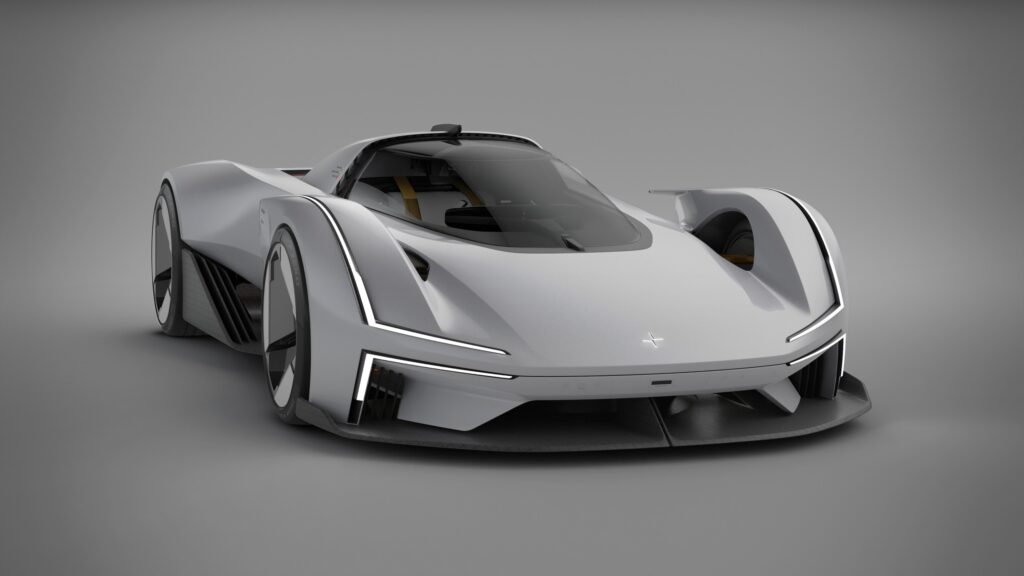
Polestar Performance: Racing Pedigree to Public Roads
The essence of Polestar’s racing heritage is not confined to the track. The marque’s storied past in motorsports has been strategically infused into every aspect of their production vehicles. This transference of racing technology and innovation is a testament to Polestar’s commitment to high performance and precision engineering.
Track Records and Achievements
With a foundation deeply rooted in competitive racing, Polestar has amassed an impressive array of track records and accolades. The Volvo v60 Polestar, a beacon of the brand’s heritage, blurs the line between track ferocity and street sophistication. Built upon this Polestar racing pedigree, the vehicle offers an adrenaline-fueled experience tempered with control and responsiveness that enthusiasts crave.
Collaboration with Racing Teams and Technological Transference
Crucial to the continuous enhancement of Polestar performance is the ongoing collaboration with experienced racing teams. These partnerships facilitate a two-way flow of knowledge and technological transference to Polestar, allowing for the optimization of performance, aerodynamics, and even efficiency in their consumer models. Such synergy fortifies the connection between the thrill of motorsports and the innovation found on public roads.
Pricing the Polestar Experience: Cost Vs. Value
When evaluating the Polestar price, it’s crucial to consider not only the sticker tag but the value it brings to the discerning electric vehicle enthusiast. The brand has positioned itself appealingly in the premium EV market, challenging the status quo with sleek design, innovative technology, and sustainable practices. A close look at how Polestar vehicles stack up against competing brands will reveal the subtleties of their market positioning.
Comparative Analysis with Competing Brands
Conducting a Polestar cost comparison involves setting the brand side-by-side with other premium electric vehicles – weighing specifications, performances, and technological advancements. Traditionally, marques like Tesla and Audi have been frontrunners in this segment. However, the value proposition of Polestar emerges through its commitment to sustainability and Scandinavian design, both critical to a certain segment of eco-conscious consumers.
Investment Potential of Polestar Cars
Polestar’s trajectory in the EV marketplace has shown the brand to be a noteworthy Polestar investment. The combination of advanced EV technology, the allure of a growing brand, and the prestige associated with Volvo’s legacy positions Polestar favorably for those considering long-term value and performance. Market trends have begun to reflect an elevated interest in Polestar as a brand that marries ecological awareness with luxury driving experiences.
Global Reach: Polestar’s Market Expansion and Consumer Base
As Polestar continues to carve out a significant niche in the electric vehicle (EV) arena, its strategic Polestar expansion initiatives have positioned the brand as a serious contender in the Polestar global market. The Swedish manufacturer, under the Volvo Car Group, has shown a remarkable propensity for understanding the delicate balance between performance and sustainability, propelling a steady growth in the Polestar consumer base. As the brand gains more prominence beyond its European strongholds, there is an emerging shift in market dynamics.
One common query that arises amidst this expansion is “who makes Polestar?” Clearing the air, Polestar remains an independent brand under the auspices of Volvo Cars and Geely, with its cars emblematic of next-generation innovation and its own distinct design and technological ethos.
What follows is an insight into the brand’s growth trajectory:
- Asia-Pacific Dominance: A significant uptick in demand across Asia-Pacific markets, especially with China hosting Polestar’s production facility.
- European Market Penetration: Polestar continues to enjoy a warm reception in Europe, a region known for its environmental consciousness and affinity for green mobility solutions.
- North American Opportunities: The brand is capitalizing on the burgeoning EV interest in North America, particularly in tech-savvy metropolitan areas.
With its eyes set on future territories, Polestar’s market approach remains firmly wedged in offering unparalleled value with each model – a testament to the brand’s dedicated pursuit of innovation and excellence in the EV landscape.
| Region | Market Growth | Key Models |
|---|---|---|
| Europe | Rapid adoption, expansive charging infrastructure support | Polestar 2, Expected Polestar 3 |
| Asia-Pacific | Substantial sales in China, increasing presence in surrounding markets | Polestar 1, Polestar 2 |
| North America | Escalating demand especially in urban centres | Polestar 2, Poised for Polestar 3 |
The Future is Bright: Upcoming Releases and Polestar’s Roadmap
The electric automotive frontier is expanding, and Polestar is at the forefront with its ambitious roadmap, which teases the arrival of awe-inspiring models like the Polestar 4, Polestar 5, and Polestar 6. As Polestar continues to innovate, the anticipation for these upcoming releases has electrified the industry and invigorated investor perspectives.

Teasers and Announcements: Polestar 4 and Beyond
Recently, Polestar has tantalized enthusiasts with glimpses into the future, unveiling teasers that offer a taste of the sophisticated design and cutting-edge technology we can expect from the Polestar 4 and its successors. Each model is a beacon of Polestar’s progressive ethos, promising to propel the marque even further into the limelight of electric luxury.
There’s palpable excitement around the Polestar 5, a grand tourer that promises to redefine elegance, performance, and sustainability. Meanwhile, whispers of the Polestar 6 suggest a revolution in electric sports cars, with unparalleled performance metrics and iconic styling. Combining sustainability with extraordinary driving dynamics, these models are set to be pivotal players in the EV market.
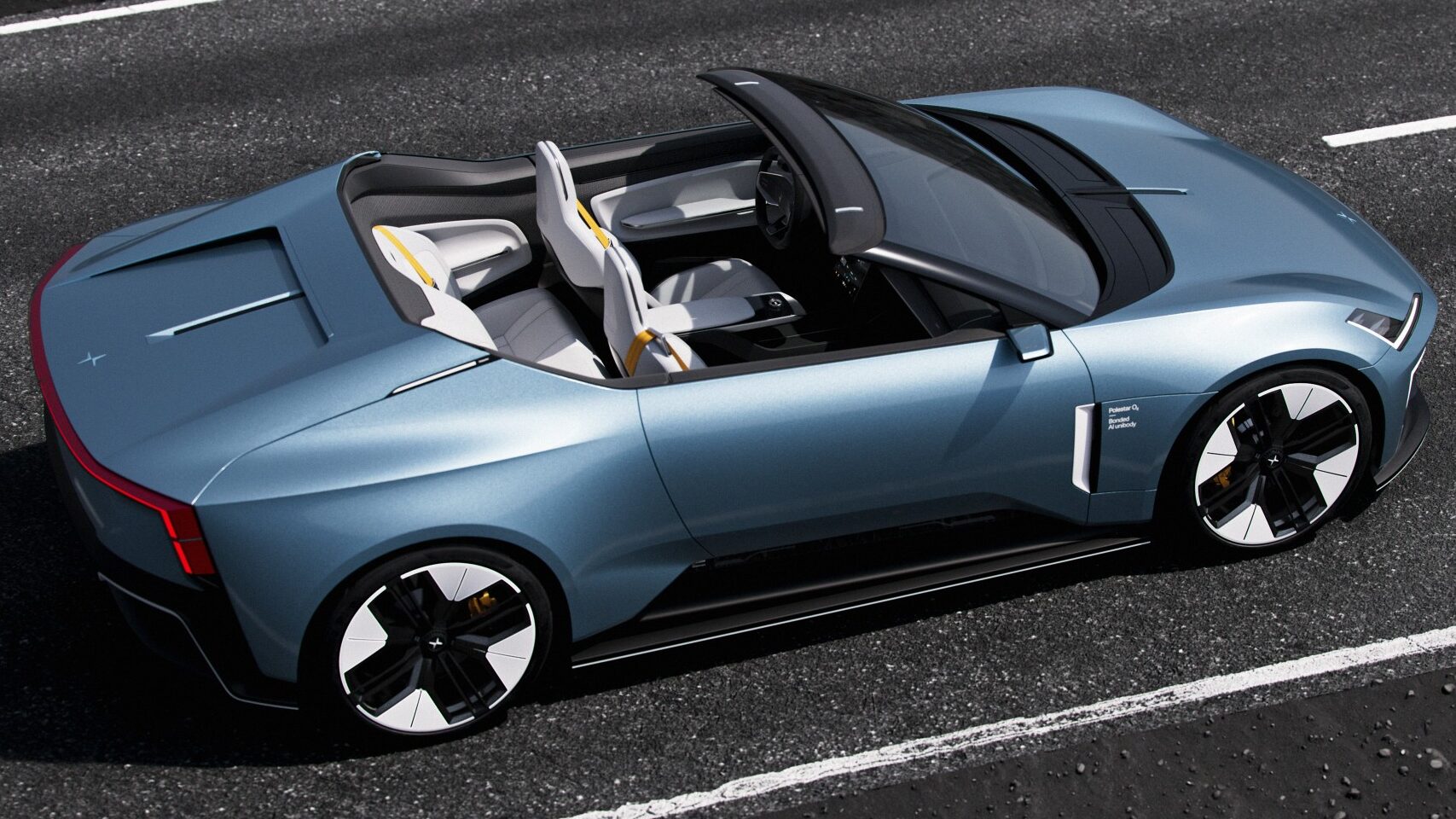
The Role of Polestar Stock and Investor Perspectives
The electric vehicle segment is not only a battleground for innovation but also a focal point of investment. Polestar stock has become a barometer for the company’s health and growth potential. Investors keep a keen eye on the brand’s strategic moves, recognizing that Polestar’s success could signify lucrative returns and a strong foothold in the EV industry.
Investor confidence is buoyed by Polestar’s clear vision and roadmap, which outline the company’s dedication to expanding its portfolio with electric vehicles tailored to various market demands. As Polestar’s blueprint for the future becomes reality, stakeholders anticipate the brand will play a significant role in shaping the trajectory of modern transportation.
Conclusion
As we’ve traced the contours of Polestar’s transformative journey, it is evident that the brand has redefined itself as an integral player in the Polestar electric revolution. From its early days of performance tuning through to its evolution into a beacon of cutting-edge EVs, Polestar has shown that visionary heritage and robust innovation can coalesce into a sustainable future.
The milestones of this journey – from racetrack to public roads – testify to the exceptional growth and unwavering commitment of the automaker. Who makes Polestar cars? It’s not just a question of the company that produces them, but also the spirit, skill, and forward-thinking approach that each vehicle encapsulates. The electric vehicle market has been irrevocably impacted by Polestar’s contribution, combining sleek design with environmentally-conscious technology.
Looking ahead, Polestar continues to trailblaze, with a range of upcoming models set to further encapsulate the brand’s visionary ethos. The automotive landscape will undoubtedly continue to transform under Polestar’s influence, as they drive the industry forward with their transformative journey. Affirming Polestar’s position as an avatar of innovation and sustainability, the road forward is as electrifying as the vehicles they meticulously craft.
FAQ
What is the history of Polestar?
Polestar began as a racing team and evolved into a high-performance car tuner for Volvo models before transitioning into a standalone electric vehicle (EV) brand within the Volvo Car Group. The brand launched its first model, Polestar 1, as a limited edition hybrid and has since focused on all-electric vehicles like the Polestar 2.
How did Polestar start, and what is its connection to Volvo?
Polestar started as a Swedish racing team and then a performance car tuner with a close affiliation to Volvo Cars. Volvo acquired Polestar in 2015, which allowed the brand to utilize Volvo’s technology and resources to evolve into a manufacturer of high-performance electric vehicles.
Why did Polestar shift to manufacturing only electric vehicles?
Polestar shifted to electric vehicles as part of a strategic move towards sustainability and innovation within the automotive industry. This transition reflects the brand’s commitment to environmental responsibility and their aim to be at the forefront of EV technology and design.
What made the Polestar 1 significant upon its launch?
Upon its launch, the Polestar 1 was groundbreaking for being Polestar’s first vehicle as an independent brand, showcasing advanced hybrid technology. Its impactful design and hybrid performance set new standards in the luxury EV segment and positioned Polestar as a serious player.
Has the Polestar 2 been successful, and what are its key features?
Yes, the Polestar 2 has been successful, acclaimed for its all-electric powertrain, innovative technology, and competitive position in the EV market. It offers a balance of performance, sustainability, and style that has resonated well with consumers and critics alike.
What technological innovations has Polestar introduced?
Polestar has introduced several technological advancements, particularly in battery systems and powertrains, improving performance and efficiency. The brand is also recognized for its sustainability efforts, from material choices to manufacturing processes aimed at reducing carbon footprints.
What can we expect from the Polestar 3 SUV?
The Polestar 3 SUV is expected to bring luxury, performance, and cutting-edge technology to the electric SUV market. Anticipated features include an eco-friendly design, advanced driver-assistance systems, and powerful electric performance.
How does Polestar incorporate its design philosophy into its vehicles?
Polestar’s design philosophy emphasizes minimalist aesthetics while focusing on functionality. Attention to detail, innovative materials, and aerodynamic considerations work together to enhance both performance and style in their vehicles.
What is the driving experience in a Polestar car like?
Driving a Polestar car provides a blend of dynamic handling, responsive acceleration, and comfort. Reviews often highlight a premium, intuitive in-car technology experience matched with smooth, quiet electric propulsion.
What makes Polestar cars special in terms of specs and features?
Polestar cars stand out with their all-electric powertrains, sustainable interior materials, user-centric technology, and Scandinavian design. The vehicles also boast impressive range capabilities and support a developing charging infrastructure.
How are Polestar vehicles manufactured?
Polestar vehicles are manufactured with strict quality control and premium craftsmanship. The process involves cutting-edge technology and meticulous attention to detail, from initial concept sketches to the final production models.
What is Polestar’s performance legacy?
Polestar carries a performance legacy from its racing origins, with achievements on the track that have informed the performance of its road cars. It maintains collaborative ties with racing teams, ensuring technology transfer from motorsports to its consumer vehicles.
How does Polestar’s pricing compare with other brands?
Polestar’s pricing competes within the premium EV segment, emphasizing value through advanced technology, sustainability features, and unique design. Though often comparable to luxury brands, it provides a distinctive character and performance pedigree.
What is Polestar’s market expansion strategy?
Polestar’s strategy involves increasing its global reach with a focus on entering and expanding in key markets. The brand aims to broaden its consumer base and strengthen brand recognition by introducing innovative electric vehicles and establishing a solid infrastructure.
Are there any upcoming Polestar models to look out for?
Yes, Polestar has announced that the Polestar 4, 5, and 6 will be future additions to their model lineup, hinting at a roadmap filled with innovative, performance-oriented electric vehicles that further the brand’s sustainability goals.
Does Polestar offer a good investment potential?
Considering Polestar’s advancements in EV technology, design, and its rising popularity, many believe that the brand has strong investment potential in the growing electric vehicle market.
Who makes Polestar cars?
Polestar cars are manufactured by Polestar Automotive Holding UK Limited, a subsidiary under the Volvo Car Group and Geely Holding. It operates as an independent brand focusing on high-performance electric vehicles.
With always +- 500 alloy wheel sets & hundreds of tires in stock you have come to the right place at Wheelpoint. You can choose from the largest range of new rims (and tires) in the Netherlands. But if you prefer a set of second-hand rims, you are also welcome. At Wheelpoint you have the unique opportunity to also exchange your current rims when you opt for new rims. This way we make it even more fun for you!
I feel really happy to have seen your webpage and look forward to so many more entertaining times reading here. Thanks once more for all the details.
Thank you for writing this article. I appreciate the subject too.
Please provide me with more details on the topic